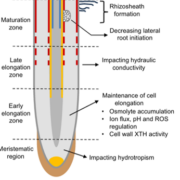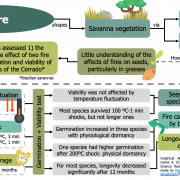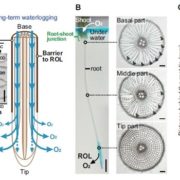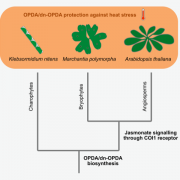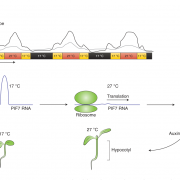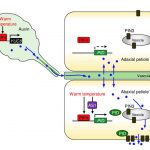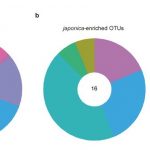Slow canopy wilting enhances drought-tolerance in soybean (J Exp Bot)
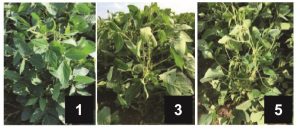 As plants are sessile organisms, they have developed highly sophisticated mechanisms to allow the modulation of development in response to environmental changes, thus maximizing their chance of survival. When soil dries, soybeans with a slow canopy wilting (SW) phenotype have delayed canopy/leaf wilting to overcome the negative impacts of drought stress. Two exotic (landraces) plant introductions (PI 567690 and PI 567731) were identified as new SW lines. Heng et al. studied the physiological mechanism of these two SW lines, trying to explain the effects of SW on yield of soybean under stress. They found that the SW phenotype in these exotic lines is involved in water use efficiency and conservation, as a result of limited transpiration response induced by water deficiency in soil. Moreover, the mechanism behind this may not be the previously hypothesized lack of silver-sensitive aquaporins, but more likely may be linked with a larger and deeper root system. Genetic analysis identified new QTLs associated with the slow canopy wilting phenotype. This study also confirmed the importance of SW on yield protection under drought stress. (Summary by Nanxun Qin). J. Exp. Bot. 10.1093/jxb/erz150
As plants are sessile organisms, they have developed highly sophisticated mechanisms to allow the modulation of development in response to environmental changes, thus maximizing their chance of survival. When soil dries, soybeans with a slow canopy wilting (SW) phenotype have delayed canopy/leaf wilting to overcome the negative impacts of drought stress. Two exotic (landraces) plant introductions (PI 567690 and PI 567731) were identified as new SW lines. Heng et al. studied the physiological mechanism of these two SW lines, trying to explain the effects of SW on yield of soybean under stress. They found that the SW phenotype in these exotic lines is involved in water use efficiency and conservation, as a result of limited transpiration response induced by water deficiency in soil. Moreover, the mechanism behind this may not be the previously hypothesized lack of silver-sensitive aquaporins, but more likely may be linked with a larger and deeper root system. Genetic analysis identified new QTLs associated with the slow canopy wilting phenotype. This study also confirmed the importance of SW on yield protection under drought stress. (Summary by Nanxun Qin). J. Exp. Bot. 10.1093/jxb/erz150


